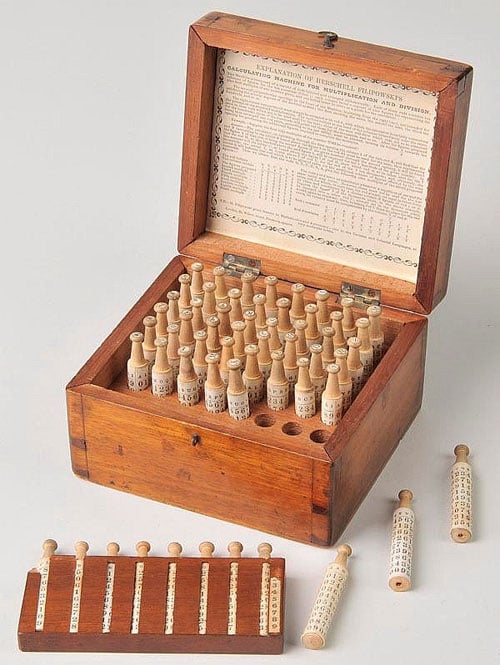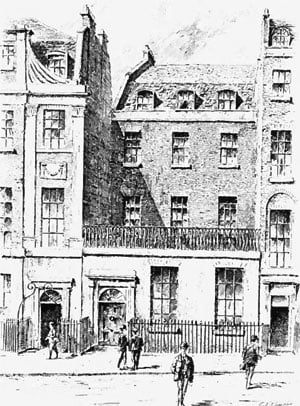Born in the 19th century in a part of the Russian Empire that is now part of Lithuania, Herschell Filipowski was a gifted man with an insatiable appetite for knowledge. Despite the limitations imposed by his surroundings, Herschell’s talents for mathematics and languages shone through at a very early age. When he was only 15 years old, Filipowski published An Almanac for One Hundred Years. What was astounding about this publication was that it was written in both Polish and Russian, a testament to Herschell’s linguistic skills. After emigrating to England, Filipowski became a teacher, mathematician, actuary, and as assistant computer. He continued publishing more works and invented his own calculating device for multiplication and division.
Herschell Filipowski
Sometime around 1860, Herschell Filipowski, a linguist, mathematician, and editor, created and released his own Calculating Machine for Multiplication and Division. This device was similar to Napier’s Bones, but was inspired by Slonimsky’s theorem. Presently, only two of these machines remain, which can be seen in the photos below. One of these machines is located at the Science Museum in London, while the other is held in a private collection.
Below you can see a picture of Filipowski’s set of calculating rods. The 56 wooden cylindrical rods were stored in holes. The wooden mahogany case is 128 mm x 130 mm x 75 mm. Up to 8 rods can be arranged side by side in a slim wooden tray in order to build the desired multiplication table. Each rod shows ten columns with digits and letters printed on paper and bears a knob on its top. The knob is marked with a single letter.

Although Slonimsky’s name isn’t mentioned at all in the explanatory text, from the example it is clear that Filipowski used Slonimsky’s theorem. The only modification concerns the replacement of indices by letters. Each rod bears those ten rows of multiples, arranged as columns.
A short description of the device, along with a calculating example and a table showing the aimed result, can be found inside the lid of the box. An interesting note is printed at the end of the description—H. Filipowski gives lessons in Mathematics and Astronomy; also in the German and Oriental Languages, at very moderate terms. London, 25, Wilson Street, Finsbury-square.
Filipowski as a Mathematician

In 1849 Filipowski published a work on A Table of Anti-Logarithms, which established his name among mathematicians. During the 1850s, he was employed as an actuary for the Colonial and Standard Life Offices at Edinburgh. In 1857 he translated Napier’s Canon of Logarithms from Latin into English, and from1864-66 he edited Baily’s Doctrine of Life Annuities and Assurance.
Then around 1860, Filipowski returned to London, and during this time he created his device for multiplication (as seen above).
Filipowski as a Linguist
Filipowski’s extensive knowledge of typography proved of great service in the publication of his works. The industrious laborer invented a font of Hebrew type, with points attached to each letter, from which a Hebrew and English Prayer-book was printed in 1862.
Filipowski’s linguistic powers may be judged from the assertion that he was conversant in German, Russian, Polish, Latin, Arabic, Hebrew, French, Spanish, English, and Chinese. However, believing that great advantages in the relations of mankind would be derived from a universal language, he urged its adoption in his various writings.
Herschell Filipowski died in London, England, on July 22, 1872.
The image featured at the top of this post is ©Unknown author / public domain


